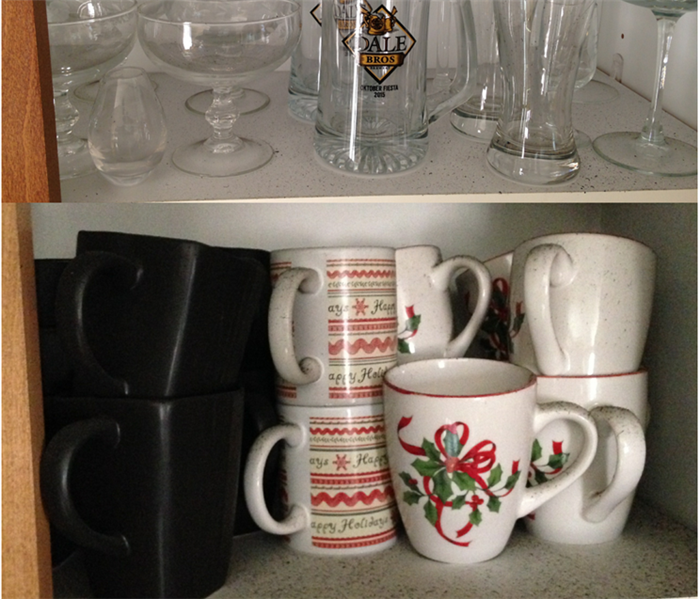Smoke Types
10/5/2016 (Permalink)
Let's talk smoke...
So just like everything else, smoke has a few secrets and tricks to it that most people are not aware of, but here at SERVPRO of West Riverside City, it’s our job to know them to properly conduct smoke damage restoration when we get the call.
A client gives us a call after coming home and finding that a small candle that was left lit while they were gone burned down to its end but not before burning its decorative plastic wrapper, a table cloth and a leather phone case. As well as melting other nearby objects like hand lotion bottles. These items produced a type of smoke categorized as “Wet Smoke”. This is because when most plastics and synthetic man made materials burn, they produce a dark, sticky ash that almost behaves like grease. Unfortunately, when our clients got back home, that’s the ash that awaited them and it covered all their belongings. Thankfully, the worst did not happen and their home was not lost or damaged from the fire other than needing an extensive cleaning and painting some of the walls and ceilings.
So why is identifying the smoke type important information for us? Because now we know the kind of cleaning method we will need to utilize when attempting to restore the house to its former glory. “Wet Ash” must be cleaned off the walls with a wet method such as a cloth damped in a special solution to most effectively remove the ash. When something like paper or wood burns, it produces a “Dry Smoke” that can be cleaned with a dry method such as using a special dry sponge that will collect the ash in its pores. Attempting to clean these different ash types with reversed cleaning methods will result in further damage or permanent staining of the surface.
Smoke Types
Wet Smoke - Plastics and Synthetic Materials. Low heat, pugnant odor, sticky residues.
Dry Smoke - Paper and Wood. Fast burning, high temperatures.
Protein Smoke - Food. Virtually invisible residues, discolors paints and varnishes, extreme pugnent odor.
Fire & Smoke Damage Tips
Do:
- Limit movement in the home or work area to prevent soot particles from being embedded into upholstery and carpet.
- Keep hands clean. Soot on hands can further soil upholstery, walls and woodwork.
- Place dry, colorfast towels or old linens on rugs, upholstery and carpet traffics areas.
- If electrical is off, empty freezer and refrigerator completely and prop doors open to help prevent odors.
- Wipe soot from chrome on kitchen and bathroom faucets, trim and appliances, then protect with these surfaces with a light coating of lubricant.
Don’t:
- Attempt to wash any walls or painted surfaces without first consulting a professional.
- Attempt to shampoo carpet or upholstered furniture without first consulting a professional.
- Attempt to clean any electrical appliances (TV sets, radios, etc.) that may have been close to fire, heat or water without first consulting an authorized professional.
- Turn on ceiling fixtures if ceiling is wet. Wiring may be wet or damaged and cause electrical shock, and air movement may create secondary damage.






 24/7 Emergency Service
24/7 Emergency Service
